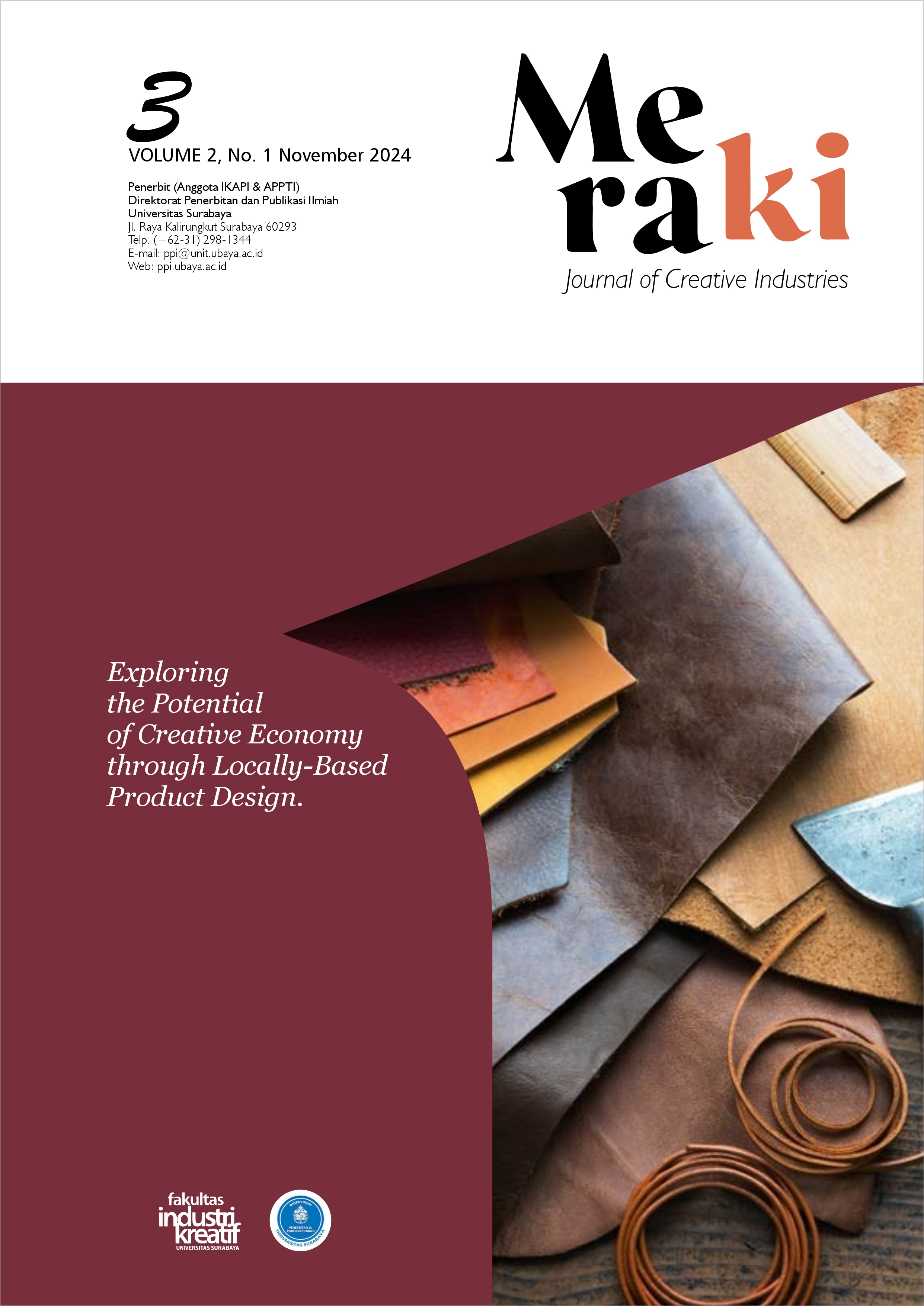Desain Produk Cenderamata Berbasis Konsep Metafora dari Konservasi Penyu di Sindu Dwarawati Turtle Conservation
 Abstract Views:
317 times
Abstract Views:
317 times
 PDF Downloads:
110 times
PDF Downloads:
110 times
Abstract
This study describes the process of designing souvenir products based on the metaphorical concept derived from the conservation of green turtles at Sindu Dwarawati Turtle Conservation, Sindu Beach, Sanur, Denpasar. The metaphorical concept serves as the foundation for capturing the form and anatomical characteristics of the green turtle to design products that are not only aesthetically pleasing but also carry profound meaning in the context of environmental conservation. Qualitative methods were employed, involving direct interviews with the Chairman of Sindu Dwarawati Turtle Conservation, I Made Winarta, and direct observations at the conservation site. The gathered data focused on the conservation values of turtles, the characteristics of green turtles, and the design preferences for souvenir products that appeal to tourists and local residents. The outcome was an interactive keychain design that integrates the carapace pattern and four limbs of the green turtle as its primary inspiration. This keychain serves not only as a visually appealing souvenir but also as an educational tool highlighting the dangers of plastic waste to the survival of turtles. Through this design, it is hoped to increase public awareness and interest in visiting turtle conservation sites
Downloads
References
(1) Prakosa, S. & Cheon, H. “Thai tourists’ souvenir shopping experience in Korea”. Asia Marketing Journal, vol.15, no.3, pp.15-29, 2013.
(2) Mulyana, D., & Setiadi, I. “Tantangan dan solusi dalam penerapan metode kualitatif di bidang ilmu sosial.” Jurnal Ilmu Sosial, vol.36, no.2, pp.89-102, 2019.
(3) Ardianto, E. “Penggunaan metafora dalam desain komunikasi visual untuk kampanye sosial.” Jurnal Desain Komunikasi Visual, vol.5, no.1, pp.45-53, 2016.
(4) Seminoff, J. A., & Shanker, K. “Marine turtles and IUCN Red Listing: A review of the process, the pitfalls, and novel assessment approaches.” Journal of Experimental Marine Biology and Ecology, vol. 356, pp.52-68, 2017.
(5) Irawan, I. G. K. “Evaluasi program konservasi penyu di Taman Nasional Bali Barat.” Jurnal Ilmiah Perikanan dan Kelautan, vol.5, no.2, pp.54-65, 2013.
(6) Adnyana, W. Konservasi Penyu di Indonesia: Perkembangan, Permasalahan dan Prospeknya. Yayasan Adi Karya Ikari, 2007.
(7) Casakin, H., & Goldschmidt, G. “Expertise and the use of visual analogy: Implications for design education.” Design Studies, vol.20, no.2, pp.153-175, 1999.

This work is licensed under a Creative Commons Attribution-ShareAlike 4.0 International License.
- Copyright on articles is retained by the respective author(s), without restrictions. A non-exclusive license is granted to Keluwih: Jurnal Sains dan Teknologi to publish the article and identify itself as its original publisher, along with the commercial right to include the article in a hardcopy issue for sale to libraries and individuals.
- Articles published in Meraki: Journal of Creative Industries are licensed under a Creative Commons Attribution-ShareAlike 4.0 International license. You are free to copy, transform, or redistribute articles for any lawful purpose in any medium, provided you give appropriate credit to the original author(s) and the journal, link to the license, indicate if changes were made, and redistribute any derivative work under the same license.
- By publishing in Meraki: Journal of Creative Industries, authors grant any third party the right to use their article to the extent provided by the Creative Commons Attribution-ShareAlike 4.0 International license.

 DOI:
DOI:


